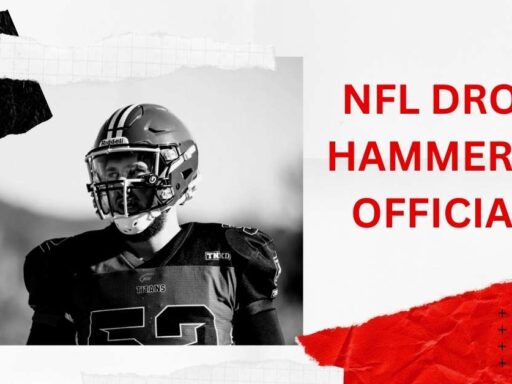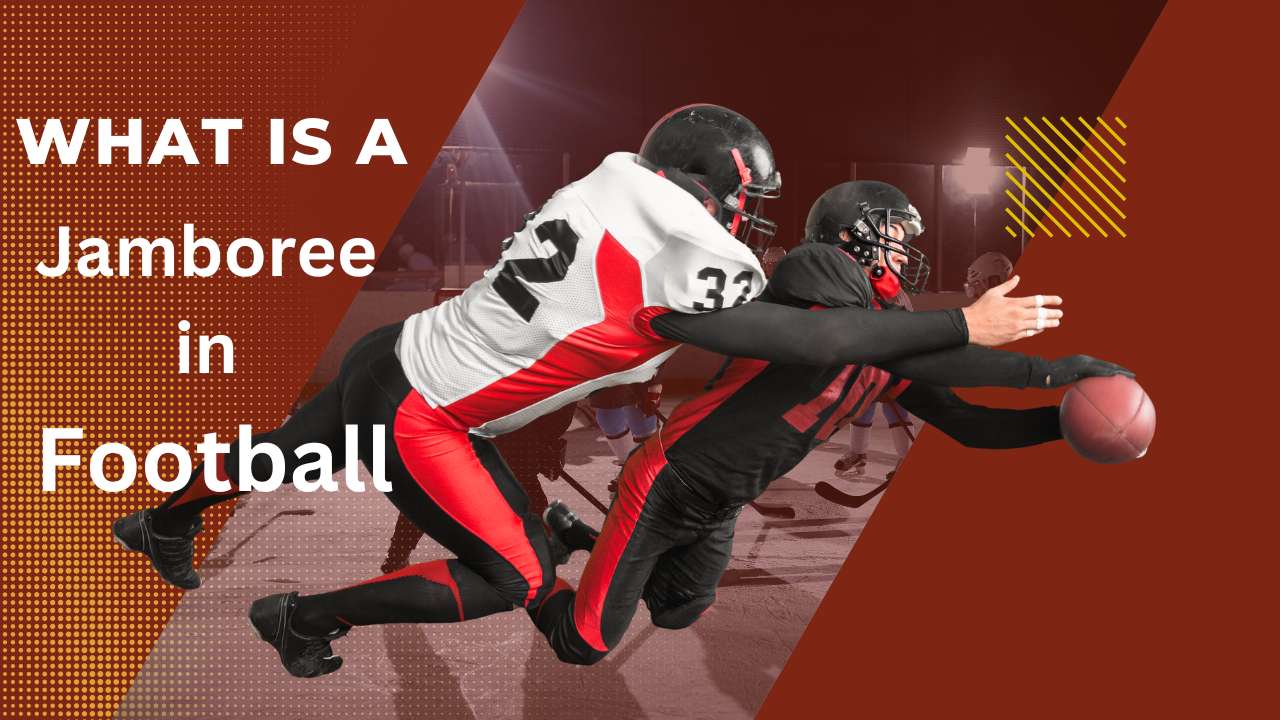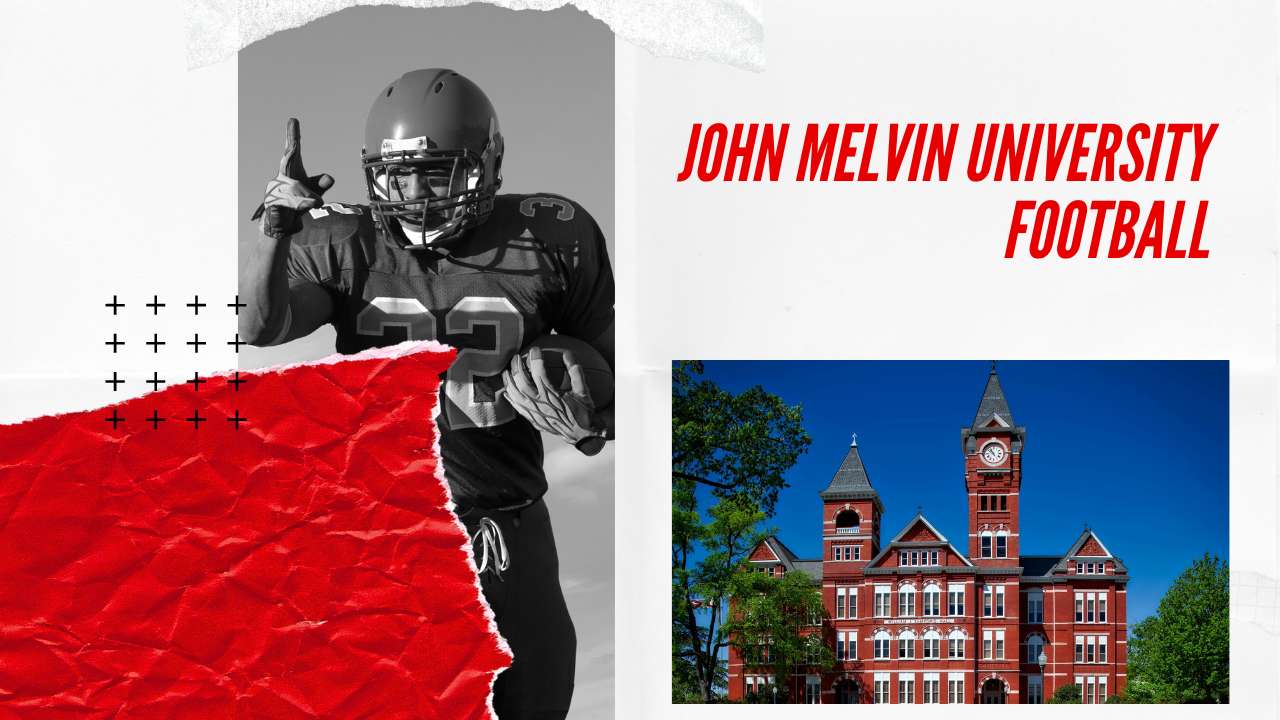Football is a game of complex strategies and distinctive player roles. One position that stands out for its unique versatility is the halfback (HB). For those wondering what is an HB in football, it’s a player whose role has evolved significantly over the years.
Football fans and coaches alike can gain a deeper understanding of the game by exploring the halfback’s responsibilities, including their crucial balance of speed, agility, and strategic thinking.This post covers the evolving role of the halfback in football, focusing on their skills and responsibilities.

What Does “HB” Stand For in Football?
In football, “HB” stands for halfback, a pivotal position within the offensive lineup. The halfback’s main job is to advance the ball on running plays, but they do much more than just carry it.
This position needs a mix of speed, agility, and quick thinking, making it one of the most versatile in football. Knowing the halfback’s role helps to understand a team’s offensive strategies.
Role of the Halfback in Football
The halfback’s primary responsibility is to run with the ball, aiming to outmaneuver the defense and gain yardage. However, modern halfbacks must do more. They must catch passes and block for other players.
Running plays exploit the halfback’s ability to find gaps in the defense. They require quick decisions and great field vision. The HB’s performance often decides a team’s offensive success. This is true for both a straight rush and a trick play.
Key Skills Every Halfback Needs
To excel as a halfback, several skills are essential. Speed is vital to outrunning defenders. Agility allows quick turns and evasive moves. Vision is another vital skill. It lets halfbacks spot openings in the defense and anticipate opponents’ moves.
Also, players need strength and endurance. They must withstand tackles and keep up performance throughout the game. These skills combine to create a formidable player capable of turning the tide in any match.
How Does the Halfback Differ from the Fullback?
Though both are integral to the running game, the halfback and fullback have distinct roles. The fullback is typically larger and focuses more on blocking than carrying the ball. Fullbacks lead the way for halfbacks during running plays, clearing paths through the defense.
In contrast, halfbacks are lighter and faster. They specialize in carrying the ball and receiving passes. Understanding these differences helps in recognizing each position’s contributions to overall team strategy.

Famous Halfbacks in Football History
Throughout football history, certain halfbacks have left an indelible mark on the game. Legends like Jim Brown, Barry Sanders, and Walter Payton redefined the running back.
Recent stars, like LaDainian Tomlinson and Adrian Peterson, inspire young players. These athletes are the ideal halfbacks. They blend athleticism with a keen strategy. This makes them great on the field.
How the Halfback Fits Into Offensive Strategy
The halfback’s versatility makes them a crucial component of offensive strategy. They can do more than run plays. They can also join in on screen passes and play-action schemes. Halfbacks can create chances for teammates.
They can act as a decoy or receive short passes. Their ability to adapt to various roles in a play adds depth to an offense. It keeps defenses guessing and exploits their weak spots.
Can a Halfback Catch Passes?
In today’s game, many halfbacks are expected to be dual threats, capable of both rushing and catching passes. This pass-catching ability complicates offensive plays. It lets teams use halfbacks in various formations.
Halfbacks with strong receiving skills can impact a team’s passing game. This is true whether they are in the backfield or as slot receivers. They create mismatches against slower linebackers or defensive backs.
How the Halfback Position Has Evolved in Football
The role of the halfback has evolved considerably over the decades. Once primarily a ball carrier, modern halfbacks now serve as all-around offensive weapons. The position’s evolution reflects changes in football strategy.
It now emphasizes speed, versatility, and adaptability. Today’s halfbacks must excel in many areas, from blocking to receiving. They are essential to any team.
Final Thoughts : What Is an HB in Football?
An HB, or halfback, in football is a versatile player typically positioned in the offensive backfield. The halfback position is undeniably key to offensive success in football. With their multifaceted roles and critical skills, halfbacks exemplify the dynamic nature of the sport.
Whether you’re a fan, player, or coach, understanding the intricacies of the halfback position can enhance your appreciation of football’s strategic depth. Next time you watch a game, keep an eye on the halfback’s performance you might just witness the play that turns the match in their team’s favor.
We’ve only scratched the surface of what makes halfbacks vital to a football team’s success. We’ve explored the history, skills, and strategic importance of the HB position. For those eager to learn more, consider watching full games closely or analyzing playbooks to see the impact of the halfback live. To enjoy football more, learn the halfback position. It will improve your skills, too.
FAQ’s
What does HB stand for in football?
HB stands for “Halfback,” a position in the offensive backfield responsible for running the ball, blocking, and sometimes catching passes.
Are RB and HB the same?
RB (Running Back) is a broader term that includes both Halfbacks (HB) and Fullbacks (FB). While the HB is usually focused on running and catching the ball, the FB often specializes in blocking.
Does HB mean running back?
Yes, the Halfback (HB) is a type of Running Back (RB), but the term “Running Back” can also refer to Fullbacks, who have different responsibilities.
What are the main duties of a Halfback?
A Halfback’s primary responsibilities include carrying the ball on running plays, blocking defenders, and sometimes catching passes out of the backfield.
How does a Halfback differ from a Fullback?
A Halfback is generally faster and more agile, tasked with running and catching, while a Fullback is typically larger, focusing more on blocking and short-yardage situations.
Is the Halfback involved in passing plays?
Yes, a Halfback can be used in passing plays, either as a receiver or as a blocker to protect the quarterback.
What qualities make a good Halfback?
A good Halfback needs speed, agility, vision to find running lanes, and strength to break tackles, along with strong decision-making and ball-handling skills.





